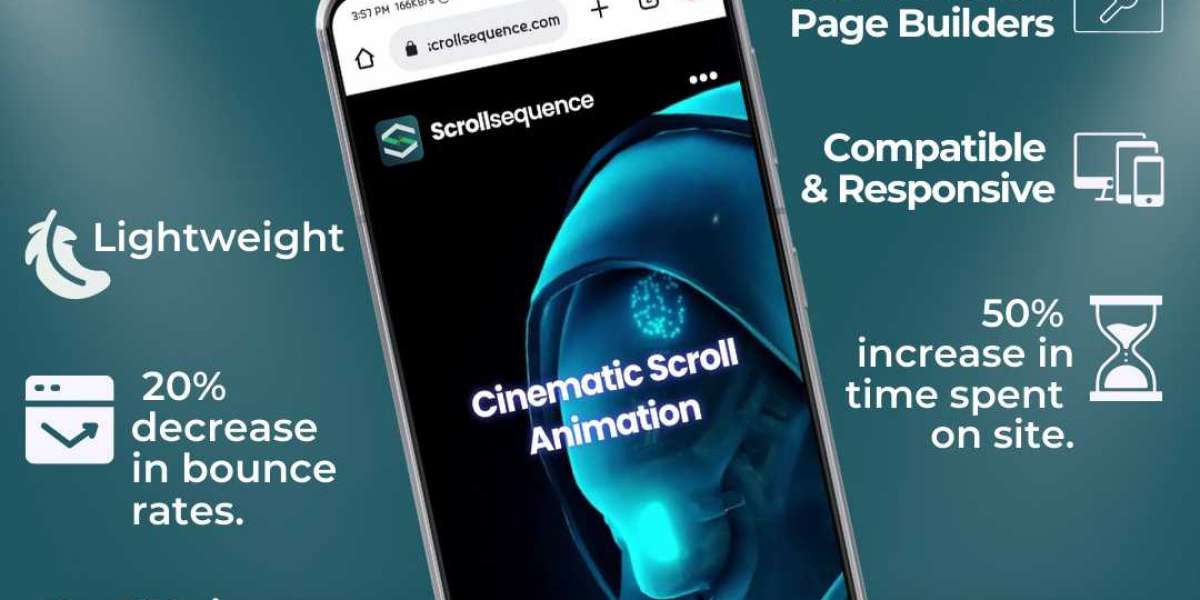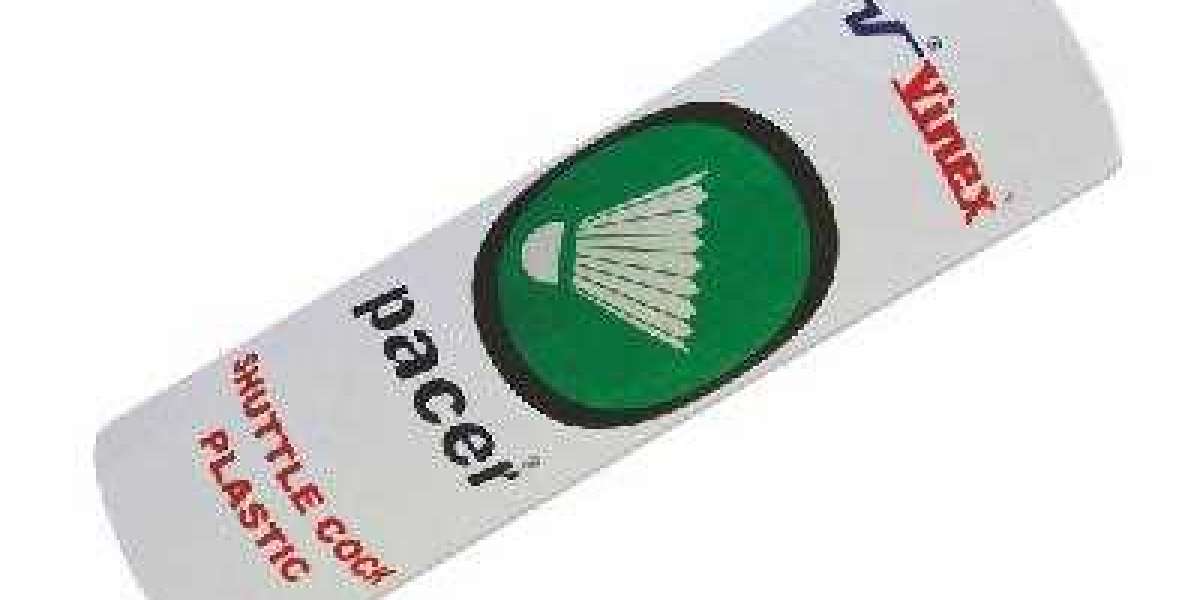Introduction
User engagement is a crucial aspect of web design, as it directly affects the success and effectiveness of a website. In today's competitive digital landscape, capturing and retaining users' attention is paramount. One powerful technique that designers can employ to surprise and engage users is scroll animations.
Scroll animations involve the use of animated effects triggered by the user's scrolling actions. As visitors navigate a web page by scrolling, various visual elements respond dynamically, creating an interactive and captivating experience. These animations can range from subtle transitions to more complex effects, such as parallax scrolling, fade-ins, or slide-ups.
So, let's dive in and discover how scroll animations can be a game-changer in designing delightful and engaging web experiences.
Understanding Scroll Animations
Scroll animations are a powerful tool in web design that adds a layer of interactivity and engagement to websites. To grasp their potential fully, let's explore the key aspects of scroll animations.
Definition and Purpose
Scroll animations, also known as scroll-triggered animations, are visual effects or transitions that occur in response to the user scrolling through a web page. These animations are typically implemented using CSS, JavaScript, or animation libraries, and they bring static elements to life as users navigate the content.
The primary purpose of scroll animations is to enhance the user experience by creating a sense of dynamism, surprise, and storytelling. By leveraging scroll animations strategically, designers can guide users' attention, communicate information effectively, and make the browsing experience more enjoyable and memorable.
Types of Scroll Animations
Scroll animations encompass a wide range of effects that can be applied to different elements on a webpage. Let's explore some common types of scroll animations:
Parallax Scrolling
Parallax scrolling involves moving foreground and background elements at different speeds, creating a multidimensional effect as users scroll. This technique adds depth and a sense of immersion to the design, giving the illusion of layers and enhancing the overall visual experience.
Fade-Ins and Fade-Outs
Fade-in animations gradually reveal elements as users scroll, bringing them into focus and capturing attention. Conversely, fade-out animations can be used to smoothly hide elements, providing a seamless transition or emphasizing important content.
Slide-Ups and Slide-Downs
Slide-up animations lift elements into view as users scroll, giving a dynamic and interactive feel. Conversely, slide-down animations can be used to hide elements, creating a sleek and polished scrolling experience.
Content Reveal
Content reveal animations involve progressively showing or expanding content as users scroll. This technique allows designers to control the timing of information delivery, building anticipation and engagement.
These are just a few examples of scroll animations, and the possibilities are vast. Designers can combine different effects creatively to achieve specific goals and deliver a unique user experience.
Examples of Effective Scroll Animations
Numerous websites have effectively utilized scroll animations to engage and captivate users. For instance, storytelling platforms may employ parallax scrolling to guide users through immersive narratives. E-commerce websites may utilize scroll-triggered animations to showcase product features or create an interactive product browsing experience.
By analyzing and drawing inspiration from these examples, designers can gain valuable insights into how scroll animations can be strategically implemented to surprise and engage users effectively.
Benefits of Scroll Animations
Scroll animations offer several benefits when it comes to enhancing user experience and engagement on websites. Let's explore some of the key advantages they bring to the table.
Enhancing User Experience through Visual Storytelling
Scroll animations provide designers with a powerful storytelling tool. By carefully choreographing the animated elements, designers can create captivating narratives that unfold as users scroll. This immersive storytelling experience keeps users engaged, encourages them to explore further, and effectively communicates information or brand messages.
Creating a Sense of Interactivity and Immersion
Scroll animations add an interactive layer to the browsing experience, making users feel actively involved in navigating the content. As users scroll, elements respond dynamically, creating a sense of interactivity and immersion. This dynamic behavior establishes a connection between the user and the website, making the overall experience more engaging and memorable.
Guiding Users' Attention and Improving Content Readability
Scroll animations serve as visual cues that guide users' attention to important elements or information on a webpage. By strategically animating key sections or content blocks, designers can direct users' focus and highlight essential messages or calls to action. Additionally, scroll animations can improve content readability by introducing content gradually, preventing overwhelming users with too much information at once.
Increasing Website Engagement and Reducing Bounce Rates
Engaging and surprising users with scroll animations can significantly increase website engagement. When users encounter captivating animations that encourage exploration and interaction, they are more likely to stay on the site longer, delve deeper into the content, and click through to other pages. This increased engagement helps reduce bounce rates, keeping visitors on the website and improving the chances of conversions or desired actions.
Scroll animations provide a unique and engaging browsing experience that goes beyond static designs. By leveraging the benefits they offer, designers can create websites that leave a lasting impression on users, increasing their satisfaction and the overall success of the website.
Best Practices for Designing Scroll Animations
Designing scroll animations requires careful planning and execution to ensure they effectively surprise and engage users. Here are some best practices to consider when incorporating scroll animations into your web design projects.
Consider the Target Audience and Website Goals
Before implementing scroll animations, it's crucial to understand your target audience and align the animations with the website's goals. Consider the demographics, preferences, and expectations of your users. Tailor the animations to match the tone, style, and purpose of the website, ensuring they resonate with the intended audience.
Plan and Storyboard the Scroll Animations
Take the time to plan and storyboard the scroll animations before diving into implementation. Define the key moments and elements that will be animated. Consider the sequence, timing, and duration of each animation. Storyboarding allows you to visualize the user experience and ensure a coherent and engaging flow throughout the scrolling journey.
Strike a Balance Between Subtlety and Effectiveness
While scroll animations can be visually appealing, it's essential to strike a balance between subtlety and effectiveness. Avoid overwhelming users with excessive or distracting animations. Instead, focus on enhancing the overall experience without overshadowing the content or causing performance issues. Subtle animations that complement the design and enhance user comprehension often have a more significant impact.
Optimize for Performance and Mobile Devices
Optimize the scroll animations for performance to ensure smooth and seamless execution. Minimize unnecessary animations, optimize code, and leverage techniques like lazy loading to improve loading times. Additionally, consider the mobile experience and ensure that the animations work well across different devices and screen sizes. Test and optimize the animations to maintain a consistent and delightful experience on all platforms.
Test and Gather User Feedback for Refinement
Testing is crucial to ensure that the scroll animations meet the desired objectives and resonate with users. Conduct usability testing to gather feedback and observe how users interact with the animations. Pay attention to their reactions, engagement levels, and any potential usability issues. Use the feedback to refine and improve the animations iteratively, ensuring they align with user expectations and preferences.
By following these best practices, you can design scroll animations that effectively surprise and engage users, enhancing the overall user experience and achieving the desired goals for your website.
Implementing Scroll Animations
Implementing scroll animations requires the use of appropriate tools and techniques to bring your designs to life. Let's explore some key considerations and options for implementing scroll animations in your web projects.
Overview of Popular Libraries and Frameworks
Several libraries and frameworks simplify the implementation of scroll animations by providing pre-built functionalities and animation effects. Here are a few popular options:
ScrollMagic
ScrollMagic is a powerful JavaScript library that enables the creation of scroll animations with ease. It offers a wide range of animation options and provides a robust API for controlling and customizing animations based on scroll events.
AOS (Animate On Scroll)
AOS is a lightweight JavaScript library that allows for easy integration of scroll animations into web pages. It provides a simple API and a variety of animation presets to apply effects to elements as they come into the viewport during scrolling.
GSAP (GreenSock Animation Platform)
GSAP is a comprehensive animation library that offers advanced capabilities for scroll animations. It provides smooth and high-performance animations, along with powerful controls for creating complex and interactive effects triggered by scrolling.
Step-by-Step Guide to Implementing Scroll Animations
Here's a step-by-step guide to implementing scroll animations using ScrollMagic and GSAP as an example:
Set up the necessary libraries: Include the ScrollMagic and GSAP libraries in your HTML document by linking to their respective JavaScript files.
Initialize ScrollMagic: Create a new ScrollMagic controller to manage the scroll animations.
Define the trigger and animation: Select the HTML element that will trigger the animation when it comes into view during scrolling. Specify the animation properties using GSAP, such as the target element, duration, easing, and desired visual effect.
Create a new scene: Use the ScrollMagic controller to create a new scene for the animation. Associate the trigger element and the animation properties with the scene.
Add the scene to the controller: Register the scene with the ScrollMagic controller using the
addScene()method.Repeat steps 3 to 5 for additional animations: If you have multiple animations on different elements, repeat the process to create scenes for each animation.
Test and refine: Preview the website and test the scroll animations. Make necessary adjustments to the trigger points, animation timing, or easing to ensure a smooth and visually appealing experience.
Tips for Troubleshooting Common Issues
During the implementation of scroll animations, you may encounter common issues. Here are some tips to troubleshoot and overcome them:
Check for JavaScript errors: Use the browser's developer tools to inspect the console for any JavaScript errors that may affect the functionality of the scroll animations.
Ensure correct library versions: Confirm that you are using compatible versions of the scroll animation libraries and ensure they are properly loaded in your HTML document.
Verify element visibility: Double-check the visibility of the trigger elements during scrolling. Ensure they have appropriate dimensions and are correctly positioned within the viewport.
Optimize performance: If your scroll animations are causing performance issues or affecting page loading speed, consider optimizing them. Reduce the complexity of animations, use efficient easing functions, and minimize the number of animations running simultaneously.
By following these implementation guidelines and troubleshooting tips, you can effectively bring your scroll animations to life and create engaging user experiences.
Inspiring Examples of Scroll Animations in Action
To gain inspiration and a deeper understanding of the possibilities with scroll animations, let's explore some impressive examples of websites that effectively utilize scroll animations to engage and surprise users.
Example 1: The Museum of Mario
The Museum of Mario website takes users on a nostalgic journey through the history of the iconic video game character. As users scroll, the website reveals interactive exhibits, animated characters, and immersive scenes from different Mario games. The animations include parallax scrolling, character animations, and dynamic transitions, creating an engaging and delightful experience for Mario fans.
Example 2: Apple WWDC 2022
Apple's WWDC (Worldwide Developers Conference) website showcases how scroll animations can be used to introduce and highlight new features and announcements. As users scroll, animated visuals seamlessly transition between sections, providing a sense of continuity and guiding users through the content. The animations include fade-ins, content reveals, and smooth transitions, enhancing the storytelling and engagement.
Example 3: Mikiya Kobayashi Portfolio
Mikiya Kobayashi's portfolio website showcases the power of minimalistic scroll animations. As users scroll, the website elegantly reveals project images and details using subtle fade-in and slide-up animations. The animations are carefully timed and integrated with the overall design, creating a sense of sophistication and enhancing the visual experience.
Example 4: Stripe Climate
Stripe Climate's website effectively communicates its environmental initiatives through scroll animations. As users scroll, the website showcases animated visualizations, statistics, and interactive elements that illustrate the impact of Stripe's sustainable practices. The animations include data visualizations, chart animations, and dynamic content reveals, making the information engaging and memorable.
By exploring these examples and analyzing what makes them successful, designers can gain valuable insights into how scroll animations can be creatively implemented to surprise and engage users effectively.
Measuring the Impact of Scroll Animations
To ensure the effectiveness of scroll animations in enhancing user experiences, it's essential to measure their impact and gather insights. Let's explore some key metrics and methods for evaluating the effectiveness of scroll animations.
Tracking User Engagement Metrics
Engagement metrics provide valuable insights into how users interact with scroll animations and the overall website. Some key metrics to consider include:
Scroll depth: Measure how far users scroll on a page to understand their engagement level and whether they are reaching the animated elements.
Time on page: Analyze the average time users spend on a page to gauge their level of interest and engagement. Longer dwell times may indicate that the scroll animations are capturing and retaining users' attention.
Click-through rates: Track the click-through rates on interactive elements or calls to action triggered by scroll animations. Higher click-through rates suggest that the animations are effectively driving user actions.
Bounce rates: Monitor the bounce rates of pages with scroll animations. Lower bounce rates indicate that the animations are holding users' interest and encouraging them to explore further.
User Feedback and Surveys
Collecting user feedback and insights through surveys or interviews can provide qualitative data on how users perceive and engage with the scroll animations. Ask specific questions about the animations, such as their impact on the browsing experience, level of surprise or delight, and whether they enhance comprehension or storytelling.
A/B Testing
A/B testing allows you to compare the performance of pages or variations with and without scroll animations. By randomly splitting your audience and presenting different versions, you can measure metrics such as conversion rates, engagement, and user preferences. A/B testing helps identify the specific impact of scroll animations on user behavior and can guide further optimizations.
Heatmaps and User Behavior Analytics
Heatmaps and user behavior analytics tools can provide visual representations of user interactions with scroll animations. Analyze scroll maps to identify where users are scrolling most frequently and whether they are engaging with the animated elements. Heatmaps can help identify potential areas for improvement or adjustments in the animation placements.
Iterative Improvement Based on Data
Use the insights gathered from tracking metrics, user feedback, A/B testing, and analytics to iterate and refine your scroll animations. Implement changes based on the data to optimize the animations for better engagement, conversion, and user satisfaction. Continuously monitor and evaluate the impact of these iterations to ensure ongoing improvement.
By measuring the impact of scroll animations, designers can make informed decisions, identify areas for improvement, and create more effective and engaging user experiences.
Conclusion:
In this blog post, we have explored the world of scroll animations and how they can be used to surprise and engage users on websites. We discussed the benefits of scroll animations, including enhancing user experience through visual storytelling, creating interactivity and immersion, guiding users' attention, and increasing website engagement.
To effectively design scroll animations, we outlined some best practices, such as considering the target audience and website goals, planning and storyboarding animations, striking a balance between subtlety and effectiveness, optimizing for performance and mobile devices, and testing and gathering user feedback for refinement.
We also discussed the implementation aspect, showcasing popular libraries and frameworks like ScrollMagic, AOS, and GSAP. Additionally, we provided a step-by-step guide for implementing scroll animations and offered troubleshooting tips for common issues.
To inspire designers, we explored examples of websites that effectively utilize scroll animations, such as The Museum of Mario, Apple WWDC, Mikiya Kobayashi Portfolio, and Stripe Climate. These examples demonstrated the creative potential and impact of scroll animations in creating engaging and memorable user experiences.
We emphasized the importance of measuring the impact of scroll animations, including tracking user engagement metrics, gathering user feedback and surveys, conducting A/B testing, and analyzing heatmaps and user behavior analytics. These measurement strategies help evaluate the effectiveness of scroll animations and guide iterative improvements.
In conclusion, scroll animations provide an exciting opportunity to surprise and engage users, elevating the overall browsing experience. By understanding the principles, following best practices, implementing effectively, and measuring their impact, designers can create delightful and immersive web experiences that leave a lasting impression on users.
So go ahead, unleash your creativity, and start designing delightful scroll animations that will captivate and engage your users like never before!







